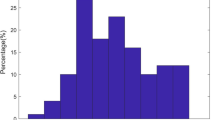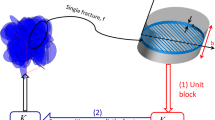Abstract
Complicated sedimentary processes control the spatial distribution of geological heterogeneities. This serves to make the nature of the fluid flow in the hydrocarbon reservoirs immensely complex. Proper modeling of these heterogeneities and evaluation of their connectivity are crucial and affects all aspects of fluid flow. Since the natural variability of heterogeneity occurs in a myriad of length scales, accurate modeling of the rock type connectivity requires a very fine scheme, which is computationally very expensive. Hence, this makes other alternative methods such as the percolation approach attractive and necessary. The percolation approach considers the hypothesis that a reservoir can be split into either permeable (sand/fracture) or impermeable rocks (shale/matrix). In this approach, the connectivity of the permeable fraction governs the flow. This method links the global properties of the system to the density of the permeable objects distributed randomly in the system. Moreover, this approach reduces many results to some simple master curves from which all-possible outcomes can be predicted by simple algebraic transformations. The current study contributes to extending the applicability of the methodology to anisotropic systems as well as using the complicated and more realistic sandbody shapes (for example, ellipsoids). This enables us to attain a better assessment of the connectivity and its associated uncertainty of the complicated rock types. Furthermore, to validate the approach, the Burgan reservoir dataset of the Norouz offshore oil field in the south of Iran was used. The findings are in conformity with the percolation approach predictions.
















Similar content being viewed by others
References
Adler PM, Thovert JF (1999) Fractures and fracture networks. Kluwer Academic, London
Baker DR, Paul G, Sreenivasan S et al (2002) Continuum percolation threshold for interpenetrating squares and cubes. Phys Rev E 66:0546136. doi:10.1103/PhysRevE.66.046136
Belayneh M, Masihi M, Matthäi SK et al (2006) Prediction of vein connectivity using the percolation approach: model test with field data. J Geophys Eng 3:219–229. doi:10.1088/1742-2132/3/3/003
Berkowitz B (1995) Analysis of fracture network connectivity using percolation theory. Math Geol 27:467–483. doi:10.1007/BF02084422
Berkowitz B (2002) Characterizing flow and transport in fractured geological media: a review. Adv Water Resour 25:861–884. doi:10.1016/S0309-1708(02)00042-8
Berkowitz B, Balberg I (1993) Percolation theory and its application to groundwater hydrology. Water Resour Res 29:775–794
Bour O, Davy P (1998) On the connectivity of three-dimensional fault networks. Water Resour Res 34:2611–2622
Bridge JS, Leeder MR (1979) A simulation model of alluvial stratigraphy. Sedimentology 26:617–644
Broadbent SR, Hammersley JM (1957) Percolation processes: I. Crystals and mazes. Math Proc Camb Philos Soc 53:629–641. doi:10.1017/S0305004100032680
Chapra SC, Canale R (2002) Numerical methods for engineers: with software and programming applications. McGraw-Hill, New York
Ewing R, Gupta S (1993) Percolation and permeability in partially structured networks. Water Resour Res 29:3179–3188
Flory PJ (1941) Molecular size distribution in three dimensional polymers: I. Gelation. J Am Chem Soc 69:30–35 doi:10.1021/ja01856a061
Haldorsen HH, Brand PJ, Macdonald CJ (1988) Review of the stochastic nature of reservoirs. In: Edwards S, King PR (eds) Proceed math oil prod. Clarendon Press, Oxford
Haldorsen HH, Damsleth E (1990) Stochastic modelling (includes associated papers 21255 and 21299). J Pet Technol 42:404–412. doi:10.2118/20321-PA
Hoshen J, Berry MW, Minser KS (1997) Percolation and cluster structure parameters: the enhanced Hoshen-Kopelman algorithm. Phys Rev E 56:1456–1460
Huerlimann A (2004) MDP report of Shell Company. Appendix seven of Soroosh & Nowrooz Burgan rock properties. Tehran, Iran
Hunt AG (2005) Percolation theory and the future of hydrogeology. Hydrogeol J 13:202–205. doi:10.1007/s10040-004-0405-6
Jensen JL, Hart JD, Willis BJ (2006) Evaluating proportions of undetected geological events in the case of erroneous identifications. Math Geol 38:103–112. doi:10.1007/s11004-005-9007-7
King PR (1990) The connectivity and conductivity of overlapping sandbodies. In: Proceedings 2nd international conference of North Sea oil and gas reservoir. Graham & Trotman, London, pp 353–362
Kirkpatrick S (1971) Classical transport in disordered media: scaling and effective-medium theories. Phys Rev Let 27:1722–1725. doi:10.1103/PhysRevLett.27.1722
Kirkpatrick S (1973) Percolation and conduction. Rev Mod Phys 45:574–588. doi:10.1103/RevModPhys.45.574
Knudby C, Carrera J, Bumgardner JD et al (2006) Binary upscaling—the role of connectivity and a new formula. Adv Water Resour 29:590–604. doi:10.1016/j.advwatres.2005.07.002
Koltermann CE, Gorelick SM (1996) Heterogeneity in sedimentary deposits: a review of structure-imitating, process-imitating, and descriptive approaches. Water Resour Res 32:2617–2658. doi:10.1029/96WR00025
Lee SB, Torquato S (1990) Monte Carlo study of correlated continuum percolation: universality and percolation thresholds. Phys Rev A 41:5338–5344
Lin CY, Hu CK (1998) Universal finite size scaling functions for percolation on three dimensional lattices. Phys Rev E 58:1521–1527
Lorenz CD, Ziff RM (2001) Precise determination of the critical percolation threshold for the three dimensional Swiss cheese model using a growth algorithm. J Chem Phys 114:3659–3661. doi:10.1063/1.1338506
de Marsily G, Delay F, Gonsalves J et al (2005) Dealing with spatial heterogeneity. Hydrogeol J 13:161–183. doi:10.1007/s10040-004-0432-3
Masihi M, King PR (2007) A correlated fracture network: modeling and percolation properties. Water Resour Res 43:W07439. doi:10.1029/2006WR005331
Masihi M, King PR, Nurafza P (2006) Effect of anisotropy on finite-size scaling in percolation theory. Phys Rev E 74:042102. doi:10.1103/PhysRevE.74.042102
Meester R, Roy R (1996) Continuum percolation. Cambridge University Press, London
Mukhopadhyay S, Sahimi M (2000) Calculation of the effective permeabilities of field-scale porous media. Chem Eng Sci 55:4495–4513. doi:10.1016/S0009-2509(00)00098-1
Mutti E, Normark WR (1991) An integrated approach to the study of turbidite systems. In: Weimer P, Link MH (eds) Seismic facies and sedimentary processes of submarine fans and turbidite systems. Springer, New York, pp 75–106
Nurafza P, King PR, Masihi M (2006) Facies connectivity modelling: analysis and field study. In: Proceedings annual conference and exhibition of SPE Europec/EAGE, Vienna, Austria, SPE 100333
Ozkaya SI, Mattner J (2003) Fracture connectivity from fracture intersections in borehole image logs. Comput Geosci 29:143–153
Perram JW, Rasmussen J, Præstgaard E et al (1996) Ellipsoid contact potential: theory and relation to overlap potentials. Phys Rev E 54:6565–6572
Prakash S, Havlin S, Schwartz M et al (1992) Structural and dynamical properties of long-range correlated percolation. Phys Rev A 46:R1724–R1727. doi:10.1103/PhysRevA.46.R1724
Ronayne MJ, Gorelick SM (2006) Effective permeability of porous media containing branching channel networks. Phys Rev E 73:026305. doi:10.1103/PhysRevE.73.026305
Sadeghnejad S, Masihi M, King PR et al (2010a) Effect of anisotropy on the scaling of connectivity and conductivity in continuum percolation theory. Phys Rev E 81:061119. doi:10.1103/PhysRevE.81.061119
Sadeghnejad S, Masihi M, King PR et al (2010b) Reservoir conductivity evaluation using percolation theory. Pet Sci Technol 29:1041–1053. doi:10.1080/10916460903502506
Sadeghnejad S, Masihi M, Shojaei A et al (2011) Field scale characterization of geological formations using percolation theory. Transp Porous Media 92:357–372. doi:10.1007/s11242-011-9907-6
Sahimi M (1994) Applications of percolation theory. Taylor and Francis, London
Sahimi M, Mukhopadhyay S (1996) Scaling properties of a percolation model with long-range correlations. Phys Rev E 54:3870–3880. doi:10.1103/PhysRevE.54.3870
Stauffer D, Aharony A (1994) Introduction to percolation theory. Taylor & Francis, London
Stockmayer WH (1944) Theory of molecular size distribution and gel formation in branched polymers. J Chem Phys 12:125–132. doi:10.1063/1.1723803
Tóth TM, Vass I (2011) Relationship between the geometric parameters of rock fractures, the size of percolation clusters and REV. Math Geosci 43:75–97. doi:10.1007/s11004-010-9315-4
Wilke S, Guyon E, de Marsily G (1985) Water penetration through fractured rocks: test of a tridimensional percolation description. J Int Assoc Math Geol 17:17–27. doi:10.1007/BF01030364
Xia W, Thrope MF (1988) Percolation properties of random ellipses. Phys Rev A 38:2650–2656. doi:10.1103/PhysRevA.38.2650
Acknowledgements
The authors would like to acknowledge useful conversations with Dr Tavakoli. In addition, we are grateful to the editor and reviewers who provided many useful suggestions.
Author information
Authors and Affiliations
Corresponding author
Rights and permissions
About this article
Cite this article
Sadeghnejad, S., Masihi, M., Pishvaie, M. et al. Rock Type Connectivity Estimation Using Percolation Theory. Math Geosci 45, 321–340 (2013). https://doi.org/10.1007/s11004-013-9446-5
Received:
Accepted:
Published:
Issue Date:
DOI: https://doi.org/10.1007/s11004-013-9446-5




